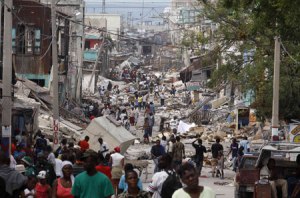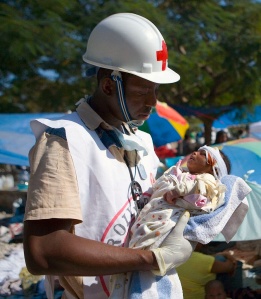It could be said that Haiti is the least “western” country in the western world. With its extreme poverty and trade deficit, it is the poorest nation in the western hemisphere and is considered to be one of the least developed. In its past, Haiti has been without the labor productivity and the foundation of strong democracy that Fareed Zakaria’s book The Post- American World argues are crucial to a country’s success. A continual colonial presence and occupation inhibited Haiti’s ability to develop economically and politically.
Zakaria recognizes non-governmental organizations as one of the major players that power is shifting to in the so-called “post-American” world. However, Zakaria also stresses the idea of legitimacy as power. He explains that legitimacy is what provides the means to establish agendas and to assure support for these initiatives. These two concepts collide in an important way in Haiti.
Over the years Haiti has played host to thousands of NGOs. Even before the 2010 earthquake, Haiti had more NGOs per capita than any other developing country other than India The constant an often overwhelming presence of NGOs in Haiti has in effect undermined the legitimacy of the Haitian government. In a New York Times article entitled the “The NGO Republic of Haiti” Kathie Klarreich and Linda Polman state that NGOs in Haiti have set their own priorities and have largely excluded the government.
Harvard professor Steven Lawry of The Hauser Center for Nonprofit Organizations, expresses a similar view point. He explains how NGOs challenge the Haitian government by creating their own infrastructure (setting up their own health, water, education and agricultural systems) with little reference to governmental oversight. He says that because of this, “funding channeled through international NGOs failed to help build the capacity of Haitian public institutions.”
This dynamic has undeniably affected Haitian nationalism. It has been argued that Haiti’s weakened state, economic instability, and lack of central authority have negative impact on Haitis’ national self-image. The Institute for Research in Socioeconomic and Public Policy indicates that the issues caused by the 2010 earthquake have had a particularly negative effect. Feelings of unrest, loss of control, and non-determination have weakened national identity. However, since the 19th century Haiti has been a hub for Black Nationalism. The spirit the contributed to the successful slave revolution in the 1800s has endured in various forms. It is particularly recognizable in Haitian art and music. It is clear that Haitians remain a proud people despite their national troubles.
http://www.thenation.com/article/170929/ngo-republic-haiti#
http://hausercenter.org/iha/2011/12/09/paul-farmer’s-call-for-a-new-conversation-on-aid-to-haiti/
http://www.brookings.edu/research/opinions/2010/01/19-haiti-kaufmann






